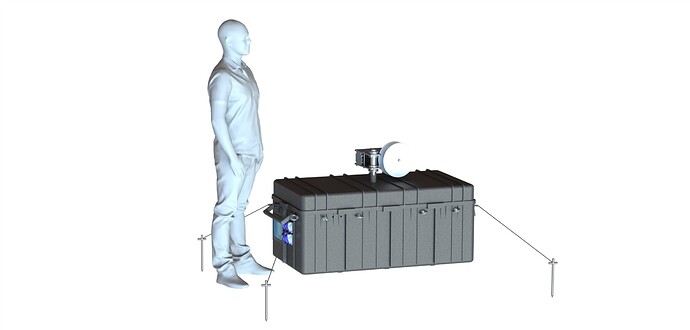I’d be a bit cautious regarding these “military” and “disaster relief” memes. They seem to be mostly a “hail-Mary” type of desperate attempt to sidestep the i9dea that no normal person in their right mind would find any reason to buy such a system. I’m trying to imagine, for example, a plausible “disaster-relief” scenario: OK, let’s see, in the U.S., say we have a destructive hurricane that knocks out sections of the grid in a certain area. Is a kite-energy system going to re-power the grid? What if there is no wind that day? What if there is only wind for a short time? What if the wind is so variable that such a system would not provide a stable amount of power?
I know, I know, what people REALLY mean for “disaster relief” is the destruction that takes place in countries where people have not planned ahead, let’s say, Guatemala has some intense rain that causes flooding and mudslides, because nobody realized a hillside of shanty houses was built on a precarious substrate. You’ve got people needing medical care and other people searching for bodies, and you ship down a kite energy system to “help”, Next development might be there is no wind. So now what do you do? Bring in a diesel generator to power your mobile hospital?, I’m not sure, but the main idea seems to be that the airborne wind energy system can fit in a shipping container, and it uses “less material to produce the same amount of power as a larger wind turbine”. The thing is, if you ACTUALLY HAD a reliable system that used less material to make the same power, there would be a demand for it, period - no “disaster” needed. It almost seems like just a way of changing the subject, and diverting the conversation toward causing a “guilt trip” in whomever you are trying to convince to buy such a system, implying that if they don’t buy the system, they just don;t care about disaster victims, never quite addressing the question of what technological solution might actually be most likely to help the helpless.
Now don’t get me wrong, I have these same fantasies about the potential for military applications, and if a system really COULD provide “disaster relief”, then more power to it (from it).
I guess if the military is trying to see how green it can seem, then helping to provide power for military bases could be “a thing”, but as to whether a forward base during a conflict could benefit from a containerized kite-flying energy system, if fuel delivery is impossible, the same questions emerge - first, if that base is stranded from fuel deliveries, how long will a wind energy system make a difference? And of course it will be hard to hide if they want to conceal their position. Bottom line, as I see it, would seem to be the same factors that supposedly point toward powering a remote island where diesel delivery is too expensive: How does it compare to just putting up a regular wind turbine? It seems like the game has transitioned from “making regular wind turbines obsolete” to finding niche applications that would magically favor less-effective energy solutions.
On the one hand I share these ideas of finding good applications, but it might not be “the answer”. Seems like it takes AWE from a possible mainstream solution, down to trying to find some tiny percentage of potential applications that could be shoehorned into acceptance, and maybe it works OK and maybe not, never fully taking into account the idea that these are applications where lives would be at stake.


